Rocks
Rocks
All the rocks that outcrop within the Leeds district are sedimentary rocks. This means that they were formed from the remains of previously existing rocks that have been broken down by weathering, transported by water, wind or ice (or a combination of), either as fragments or solutions, before being deposited as layers of soft sediment. Conversion from soft sediment to hard rock is achieved by a process called lithification. This involves compaction of the sediment, whereby grains are forced closer together, and cementation, whereby mineral salts that are dissolved in water trapped between grains or passing through the sediment, crystallise in the spaces between grains, binding them together.
Individual layers of sedimentary rocks are known as beds and can vary in thickness from less than a millimetre up to several metres. The boundaries between beds are called bedding planes and these often form observable patterns or distinctive shapes known as sedimentary structures. These structures are an indication of the conditions and the environment that the original sediment was deposited in. The most common sedimentary structures seen in sandstones in the Leeds district are cross-bedding and ripple marks.
There are a number of ways that sedimentary rocks can be placed into groups; one method uses the origin of the material they are made of:
- Clastic rocks: composed of fragments (grains) of previously existing rocks and/or minerals.
- Chemical rocks: composed of minerals precipitated from solutions.
- Organic rocks: composed of the remains of once living organisms.
Clastic rocks
The size, shape and composition of grains vary greatly. These characteristics, when combined with sedimentary structures formed at the time of deposition, can be used to determine the conditions under which the sediment was formed. For example:
- Grain size is an indication of the strength of the fluid current that transported and deposited the grains. The larger the grains, the stronger the current.
- Grain shape is an indication of the amount of wear the fragment has experienced; the more rounded a grain is, the more wear it has suffered.
- Grain composition is an indication of the parent rock as well as the amount of wear the sediment experienced. The greater the proportion of resistant minerals in a rock (such as quartz) is an indication of greater wear.
Clastic rocks are sub-divided on size of their fragments.
Sandstones
These are rocks composed of grains that are between 0.0625 – 2 mm in diameter and so can be very variable. Sandstones that occur in the Leeds district include:
Gritstone (Figure 1) – These are coarse-grained sandstones with most of their grains being at the upper end of the size range, along with ones bigger than 2mm. Grains are angular in shape and consist of different types of mineral and rock fragments. There are many layers of gritstones in the Millstone Grit Group some of which can be traced over a wide area. The most distinctive units have been given names that relate to the place where they are best seen e.g., Guiseley Grit, or their character e.g. the Rough Rock – a very pebbly grit, or a combination of both e.g, Huddersfield White Rock.

Figure 1 – Gritstone
Within the Leeds district nearly all gritstones were formed in large rivers.
Sandstone (Figure 2) – These are made of grains that lie within the size range for the group and can be described as being coarse, medium or fine grained depending the size of the majority of grains. The grains are usually sub-angular in shape and most are made of the mineral quartz.
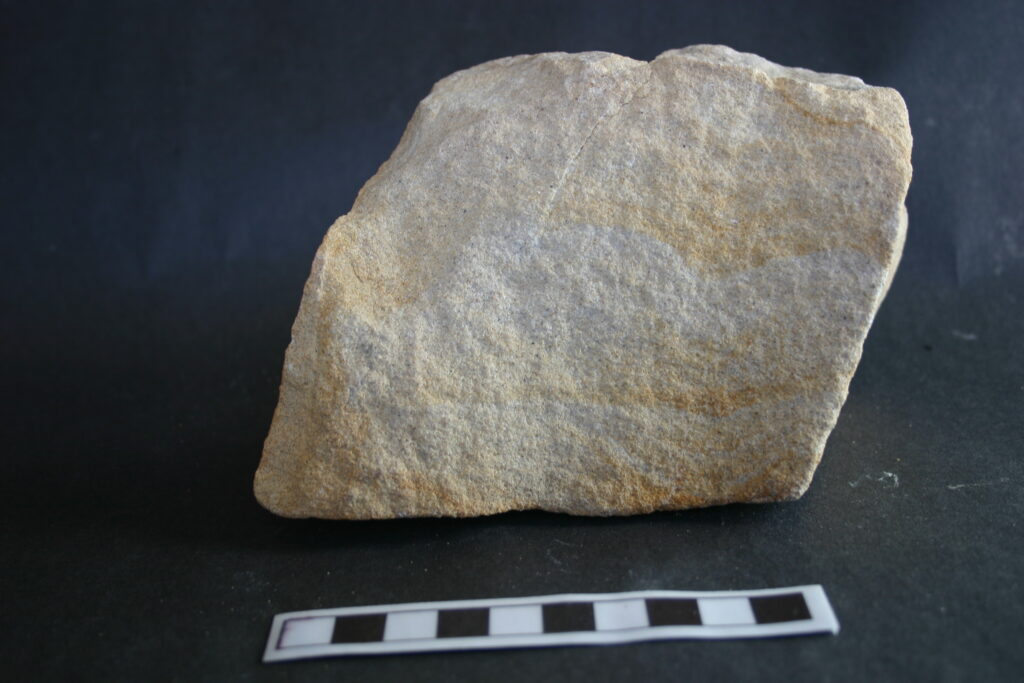
Figure 2 – Sandstone
Most sandstones in the Leeds district were formed in large rivers and deltas.
Flagstones (Figure 3) – These are composed of fine to medium sized grains and the rock readily splits into layers a few centimetres thick. This is because they were originally deposited as thin layers of sediment and it is along the bedding planes that the rock breaks.

Figure 3 – Flagstone
Most flagstones in the Leeds district were formed in rivers, deltas and lakes.
Desert Sandstone (Figure 4) – Known as the Yellow Sands Formation, these rocks have grains that are usually quite fine but of a very similar size (well sorted), well rounded, polished and composed nearly wholly of one mineral; quartz.

Figure 4 – Desert sandstone
These rocks were formed in deserts which covered the Leeds area during the Permian age. The grains were moved by the winds and the jostling and collisions between these wind blown grains created their polished surfaces.
Siltstones (Figure 5) – These are rocks made of particles between 0.002 – 0.05 mm in diameter which are composed of very finely ground down rock and mineral fragments. Being so small these particles are only deposited in places where current energy is low.
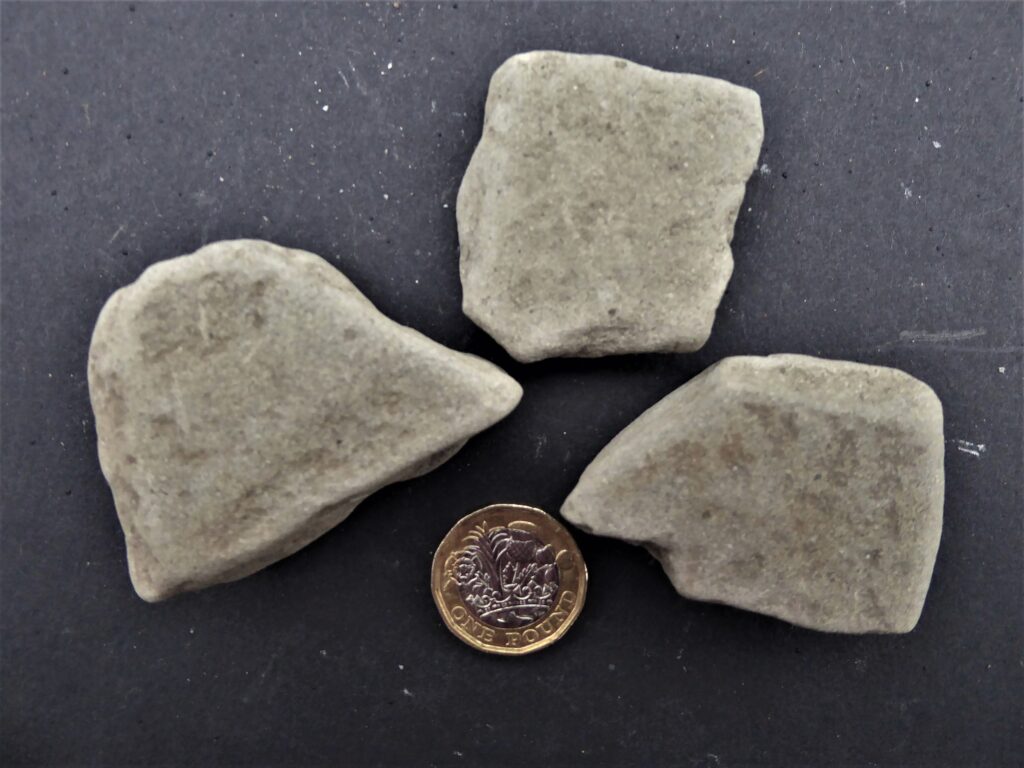
Figure 5 – Siltstone
Most siltstones in the Leeds district were formed in rivers, deltas, lakes or the sea.
Mudrocks
These are made of grains smaller than 0.002 mm in diameter, which are too small to be seen with the naked eye. The grains are mostly composed of clay minerals, formed by chemical alteration of previously existing minerals. Being so small the grains are only deposited in very slow moving water. Mudrocks are often dark grey in colour which is due to high levels of carbon they contain. This comes from organisms that were living in the water at the time of deposition and which didn’t fully decompose on death due to the water lacking in oxygen. Mudrocks are generally soft and easily weathered and eroded.
The most common types are:
Mudstone (Figure 6) which has little internal structure and breaks into blocks.
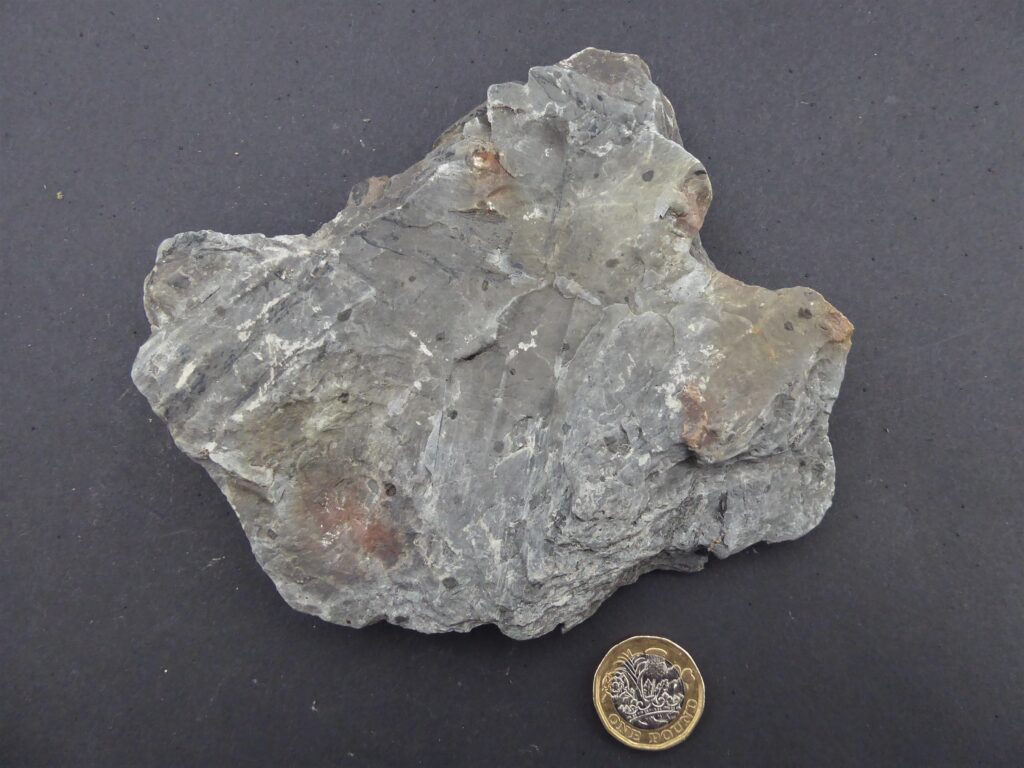
Figure 6 – Mudstone
Shale (Figure 7) which is very finely layered (laminated), so breaks into thin sheets.
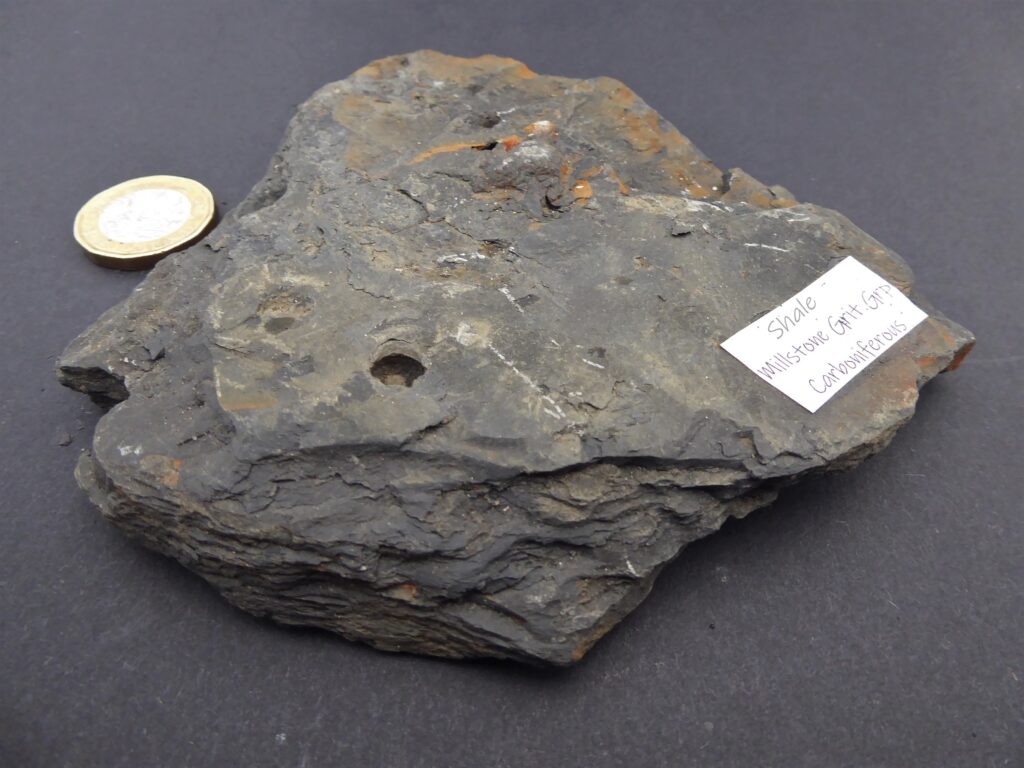
Figure 7 – Shale
Clay which is soft and pliable as it is unconsolidated.
Chemical and Organic Rocks
Limestone (Figure 8) – Limestones are composed of more than 50% of carbonate minerals (XCO3). Most are formed in clear, shallow, warm seas. The carbonate is either Calcite (CaCO3) or Dolomite (CaMg(CO3)2 ) or mixtures of both. Calcite can have a chemical origin, forming as a precipitate when sea water evaporates and tiny crystals of calcite form a lime mud, or an organic origin, forming from the breakup of shells and skeletons of animals or as droppings of animals burrowing through lime muds. Dolomitic limestones are composed of a mixture of calcite and dolomite and are formed by the chemical alteration of previously formed calcitic limestone by high salinity waters.

Figure 8 – Dolomitic limestone
The limestones in the Leeds area are all dolomitic limestones and were formed with shallow and warm seas.
Coal (Figure 9) – Coal is composed of partially decomposed organic matter. When plants growing in swamp environments shed leaves, branches, spores or fall over, they become buried in an environment with little or no oxygen. Here the normal decay processes performed by animals, fungi and bacteria are halted, or greatly reduced, and the organic matter isn’t ‘recycled’ but turns into peat. When this is buried by overlying sediments the increase in pressure begins to drive out water and a process of complex bio-chemical reactions begin to release gases, enriching the amount of carbon in the peat. Over time, deeper burial and its associated increase in temperature and pressure, sees this process continue and the peat hardens to become coal.

Figure 9 – Coal
There are many coal seams beneath the Leeds area and these have been actively mined in the historical and recent past. There are no good exposures visible at the surface in the area.
Ironstone (Figure 10) – These are rocks rich in iron minerals and occur in mudrocks as hard, thin layers or isolated lumps called nodules. They form as a result of complex chemical reactions acting on the products of partial decomposition of organic material, soon after the sediment in which they occur was deposited.
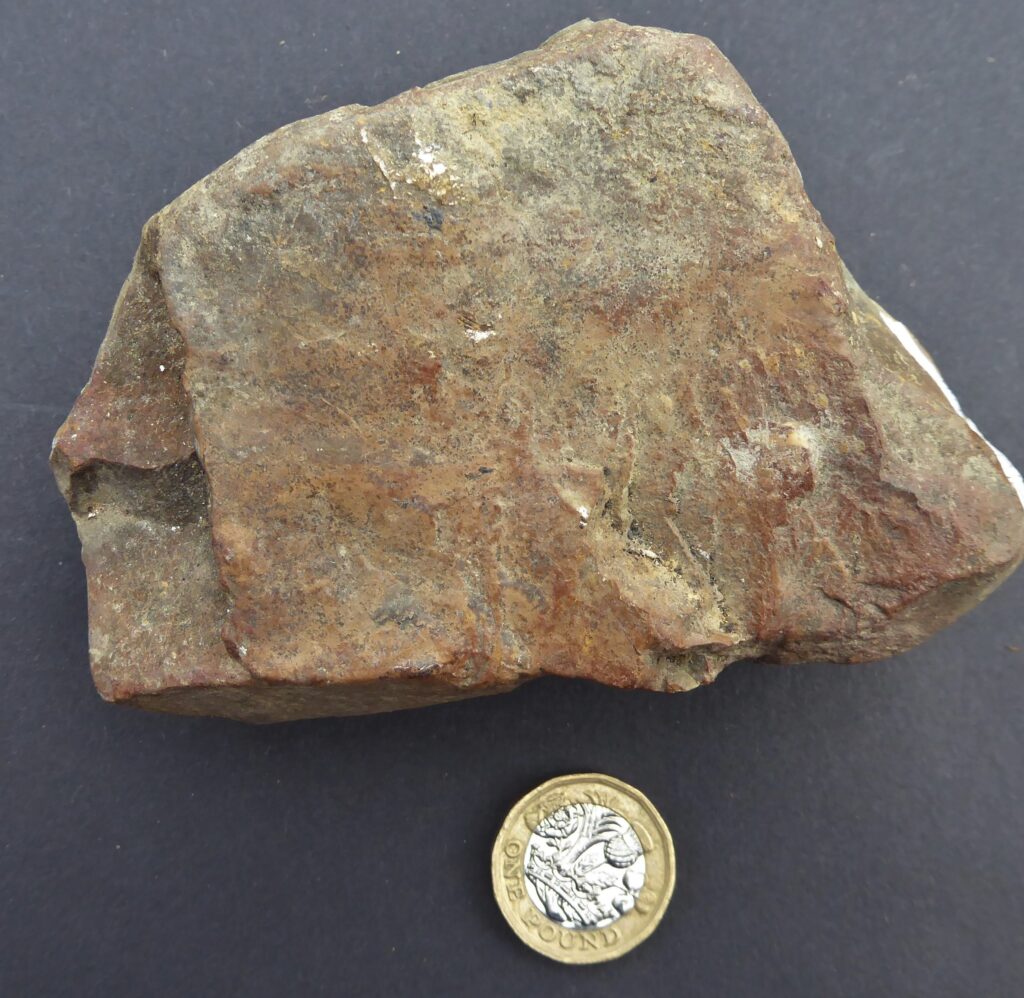
Figure 10 – Ironstone nodule
Within the Leeds area most ironstones formed within the brackish waters of the coal swamps.
